You’ve probably read it many times before. You might even be tired of hearing this, too.
Content is king. It’s the future of marketing.
It’s that link that connects a business and its target audience in a relevant, meaningful way. If done properly, it can make a business relatable and drive conversion much better than other marketing methods. That’s why 91 percent of B2B digital marketers use content marketing, says Content Marketing Institute, and they are getting better and better at it every day.
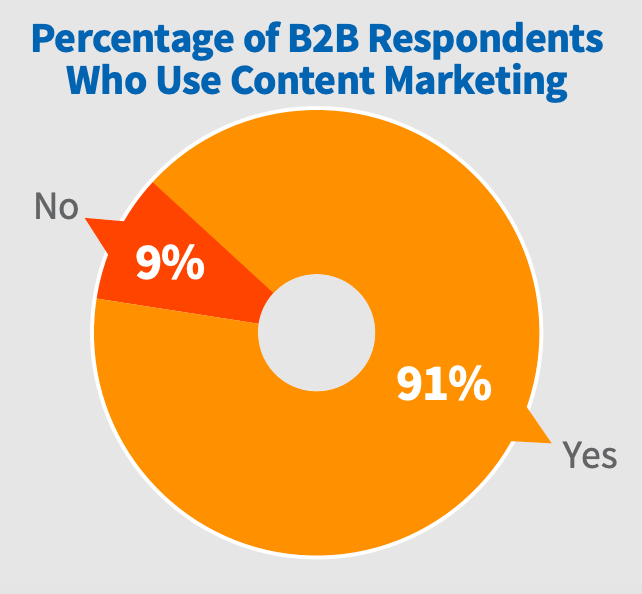
Credit: Content Marketing Institute
Regardless of the type of business you have, you can utilize this content marketing to attract the attention of your target audience and drive profitable action. If you learn how to create relevant, valuable, helpful, and engaging content for your marketing strategies, chances are that your conversion rate will increase, along with the trust your customers have in your business being one of the best when it comes to meeting their needs.
Many online content marketing guides target large companies with big marketing budgets, but the guide you’re reading is different. I created it specifically for small- and medium-sized businesses who are looking to learn how to use content in their local marketing strategy to drive profitable action in a cost-effective way.
So, here’s what you can do.
How to Use Content in a Local Marketing Strategy
1. Publish Customer-Focused Educational Content on Your Blog
Before you begin building your content marketing strategy, you should understand very well that content creation is a lot of work that requires audience research, proofreading, and editing, among other time-consuming activities.
Customer-focused educational content is a perfect example of what content marketing is all about. Let’s suppose that you’re running a bike shop that also does maintenance and repair. To start with content marketing, you can create a blog on your website. There, you will publish your content and interact with leads and customers.
If you know a thing or two about bikes, then you should definitely come up with some ideas for content. For example, you can give advice on how to repair the most common issues, perform tune-ups and maintenance, review new models, share news from the world of bicycles, or even cover some relevant events in your area.
Let’s consider an example. Take a look at the blog topics from Massachusetts-based DedHam Bike shop. 
Source: Screenshot
As you can see, most of the topics are educational, and all are focused on the customer; in other words, each article has a certain value to the customer, whether it’s advice on how to buy a good bike under $500, choose cycling shorts, or get started with mountain biking. Without a doubt, a lot of people visiting the website would be interested in reading at least something from this fine selection.
Don’t forget that you can create the following high-performing types of content for your blog:
- How-to articles giving useful advice
- Product reviews, comparisons of models, etc.
- Infographics with interesting facts from the industry or local community.
Keep in mind that all the content you produce should be localized in terms of language as well. If the primary language of your target audience is not English, then you should definitely publish content in that language, too. Localization is something that you can do easily (you can check the current prices using tools like The Word Point) and that’ll go a long way for making your content more reader-focused.
Moreover, the production of customer-focused, relevant content is exactly what Google wants websites to do to rank higher in search results. Here’s a part of the search engine’s official content guidelines that explains how the creation of such content makes a website Google-friendly.

To know what your target audience is looking for online requires researching keywords as well as asking them directly with surveys.
If you do this, you’ll increase the chance of:
- Improving the position of your business’s website in Google results by enticing webmasters to link to it
- Increasing high-quality traffic and lead generation with email sign up forms etc.
- Maximizing customer engagement via blog comments, direct emails with questions, etc.
- Improving the image of your business as an expert in your niche.
And if you’re still hesitating, take a look at this. According to a survey, 69 percent of business executives believe that having a blog is whether “essential” or “important” for local businesses to get more customers (aka, it’s important for your local marketing strategy).
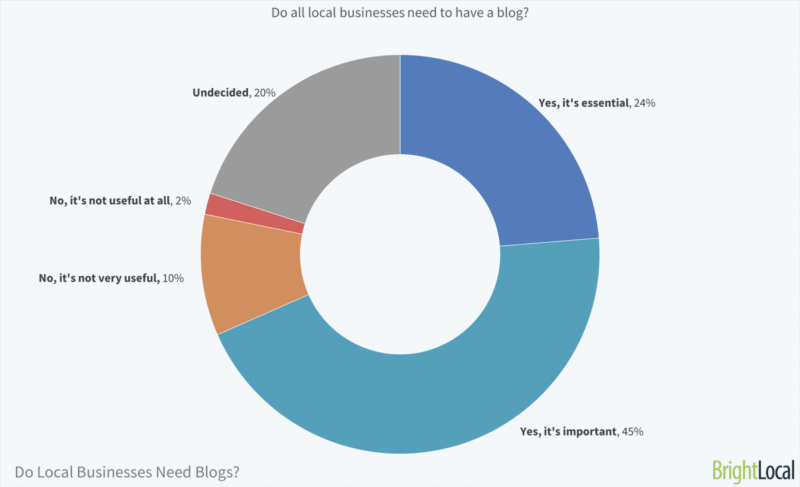
Credit: BrightLocal
Any questions?
2. Claim Your Local Business Listing and Enrich it with Content
Since the number of “near me” searches has been steadily increasing in recent years, Google has come up with an excellent solution for local businesses. It’s called Google My Business, and it’s a free online service that allows local businesses to connect with customers through Google Maps and search.
The registration with Google My Business shows their precise location in Google Maps and gives companies a chance of being displayed in the search engine’s three-pack of results that appear on the top.
For example, here’s the three-pack generated by Google for “bike shops in Melbourne.”
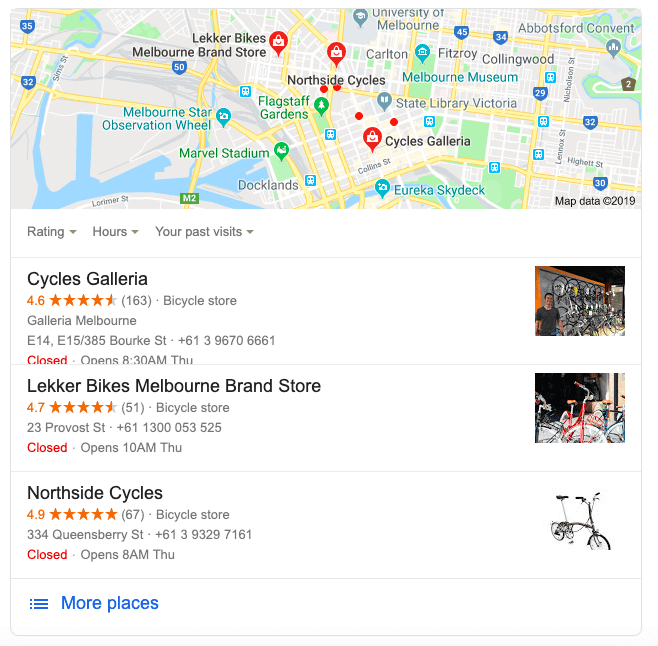
Source: Screenshot
And if the user clicks on the Maps, he or she will land on Google Maps page displaying bike shops in the searched area. A click on a specific bike shop will display the information from Google My Business, including business hours, address, customer reviews, contact data, images of the business, and answers to customers’ questions about the business.
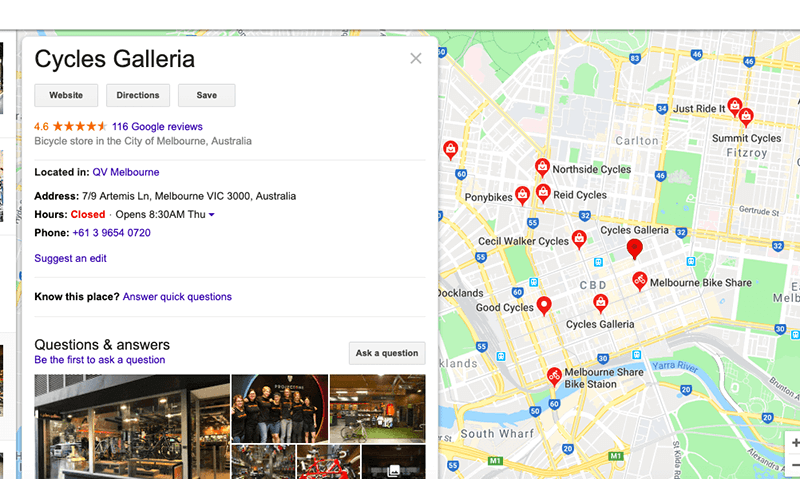
Source: Screenshot
None of this would have happened without Google My Business, so your venture should also have its page to make it easier for customers to find your location as well as the most common information they may require about your business.
Make sure to provide your listing with real photos of your business; for example, if you’re running a restaurant, you can take pictures of the interior as well as some dishes to entice people to come. Moreover, good customer reviews will also go a long way in encouraging local customers to check out your business (don’t forget that 86 percent of customers read reviews of local businesses on a regular basis).
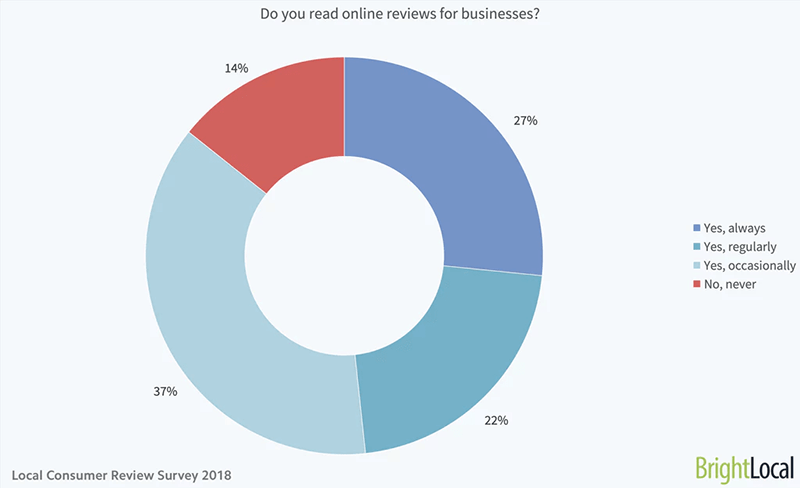
Credit: BrightLocal
So, to recap, claiming your Google My Business listing will help you to connect with more customers through Google search and Google maps; moreover, people will be able to check out additional information about your business as well as read about the experiences of previous customers.
3. Use Email Marketing
Email marketing is one of the most popular marketing channels that can help you to achieve the following goals:
- Supply leads and customers with relevant content to keep your business at the top of their minds
- Drive traffic to your blog/landing pages
- Share news about sales, discounts, special offers, events.
You can start with email marketing when your blog is up and running, and collect people’s emails with a signup form. To maximize the effectiveness of your messages, you should make them targeted and personalized with email marketing software like Gist.
For example, it can help you to send a specific email sequence to maximize the chance of engaging customers starting with a welcome email (which, by the way, generate 5 times more clicks and 4 times more opens than regular email marketing campaigns). The lead nurturing effort is supported by cart abandonment emails, order confirmation emails, newsletters, and re-engagement emails, too.
Local Marketing Strategy Wrap-Up
Let me make it absolutely clear: content is essential to the success of local marketing strategies. However, you should keep in mind that content marketing is a marathon, not a sprint, so it requires a high level of commitment and knowledge. Hopefully, this article was a good introduction to the art of using content in local marketing strategies for you and inspired you to start something special, too.